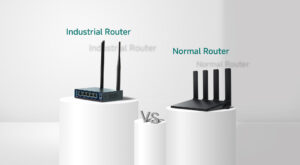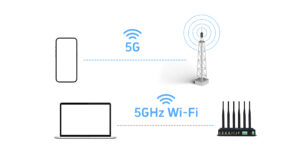In industrial automation and IoT applications, serial servers and modbus gateways are both crucial for connecting legacy serial devices to modern networks. They may have overlapping functions, but they are not always interchangeable.
This guide explains:
✔ What Serial Servers and Modbus Gateways do
✔ Key differences between them
✔ When to use each device
✔ Real-world applications
What is a Serial Server?
A Serial Server (also called a Serial-to-Ethernet Converter) is a device that enables bidirectional transparent data transmission between RS-232/485/422 serial ports and TCP/IP networks. There are various types of serial servers, such as single serial port RS-485 to network, RS-232 to network, dual serial port RS-485/RS-232 to network, and RS-232 and RS-485 serial ports work independently at the same time without affecting each other. There are also 4-port, 8-port, 16-port, etc.
Key Features of Serial Servers
✅ Protocol Transparency – Transmits raw serial data without modification
✅ Supports Multiple Serial Standards – RS-232, RS-485, RS-422
✅ Virtual COM Port Support – Allows legacy software to work over Ethernet
✅ Long-Distance Communication – Extends serial connections globally via the internet
Common Uses of Serial Servers
- Connecting CNC machines, barcode scanners, or PLCs to a network
- Remotely accessing legacy industrial equipment
- Extending serial communication beyond RS-485 distance limits
What is a Modbus Gateway?
A Modbus Gateway is a specialized device that converts Modbus RTU/ASCII to Modbus TCP (and vice versa). It acts as a protocol translator, enabling Modbus serial devices to communicate over Ethernet.
Key Features of Modbus Gateways
✅ Protocol Conversion – Modbus RTU ↔ Modbus TCP
✅ Multi-Master Support – Multiple hosts can query devices simultaneously
✅ Slave ID Mapping – Allows duplicate device IDs in the same network
✅ Data Buffering – Caches responses to speed up queries
Common Uses of Modbus Gateways
- Integrating Modbus RTU PLCs into SCADA systems
- Aggregating data from multiple sensors in smart agriculture
- Enabling cloud monitoring of industrial equipment
Serial Server vs Modbus Gateway: 5 Key Differences
| Feature | Serial Server | Modbus Gateway |
|---|---|---|
| Primary Function | Transparent serial-to-Ethernet conversion | Modbus RTU ↔ Modbus TCP conversion |
| Protocol Support | All serial protocols (raw data) | Only Modbus RTU/ASCII & Modbus TCP |
| Multi-Master Support | ❌ Only one host can communicate at a time | ✅ Multiple hosts can query devices |
| Slave ID Handling | Requires unique IDs for each device | Allows duplicate IDs (supports mapping) |
| Data Buffering | ❌ No caching | ✅ Stores responses for faster queries |
When to Use a Serial Server vs Modbus Gateway?
Choose a Serial Server If You Need:
🔹 Transparent serial communication (no protocol conversion)
🔹 Support for non-Modbus devices (e.g., barcode scanners, printers)
🔹 Virtual COM port functionality
Choose a Modbus Gateway If You Need:
🔹 Modbus RTU to Modbus TCP conversion
🔹 Multiple hosts accessing the same device
🔹 Slave ID mapping (duplicate IDs allowed)
🔹 Faster response times with data buffering
Real-World Examples
Serial Server Use Case
A factory uses a Serial Server to connect an old RS-485-based CNC machine to a modern MES system. Since the CNC uses a proprietary protocol (not Modbus), a Serial Server is the best choice.
Modbus Gateway Use Case
A water treatment plant uses a Modbus Gateway to connect 10 Modbus RTU PLCs to a cloud-based SCADA system. The gateway converts RTU to TCP, allowing multiple operators to monitor the system simultaneously.
Q1: Can a Serial Server work with Modbus devices?
A: Yes, but it only forwards raw data—it does not convert protocols. You’ll need additional software to handle Modbus TCP.
Q2: Can a Modbus Gateway replace a Serial Server?
A: Only if all devices use Modbus RTU/ASCII. If non-Modbus devices are involved, a Serial Server is needed.
Q3: Which is better for SCADA systems?
A: A Modbus Gateway is ideal for SCADA because it supports multi-master communication and data buffering.


